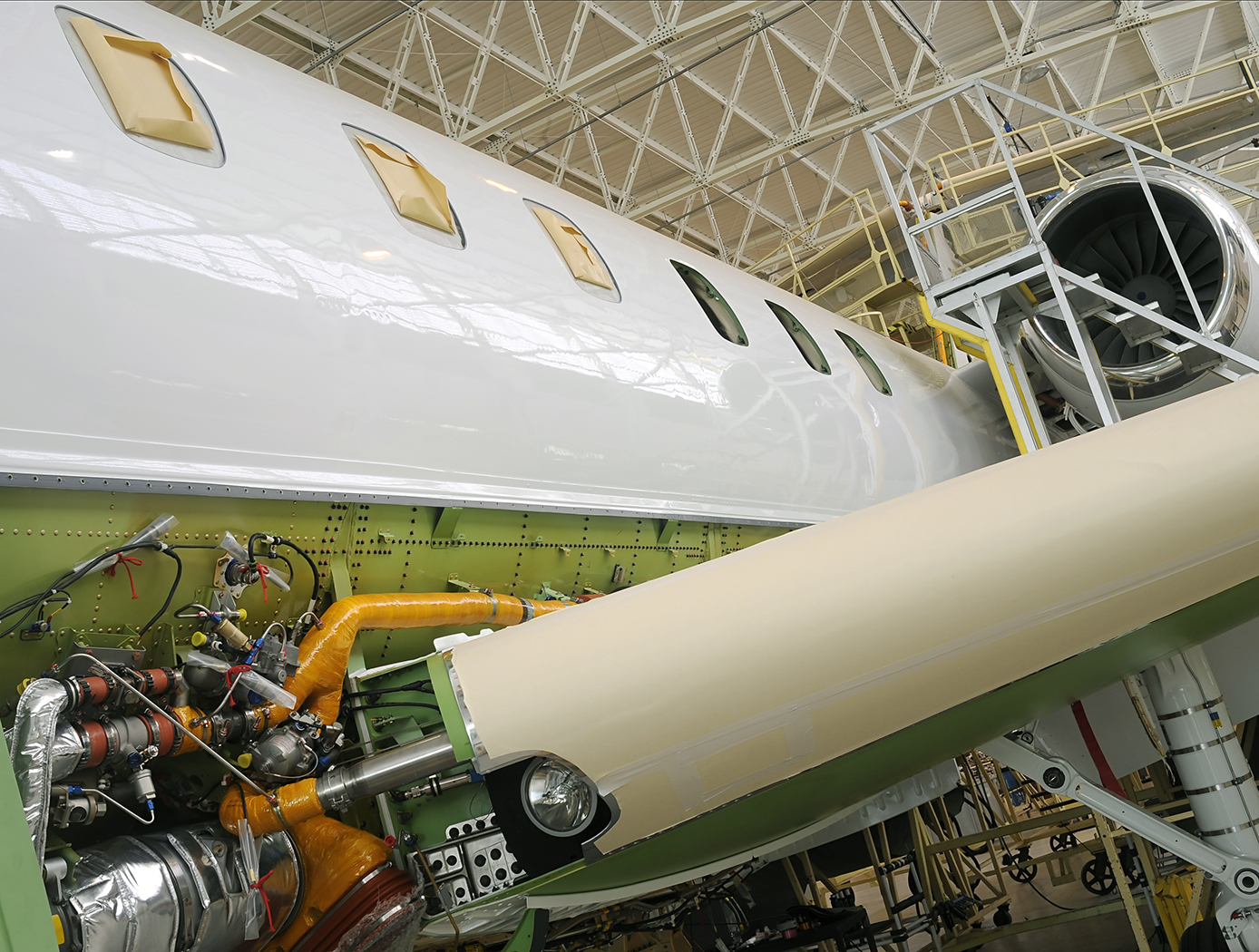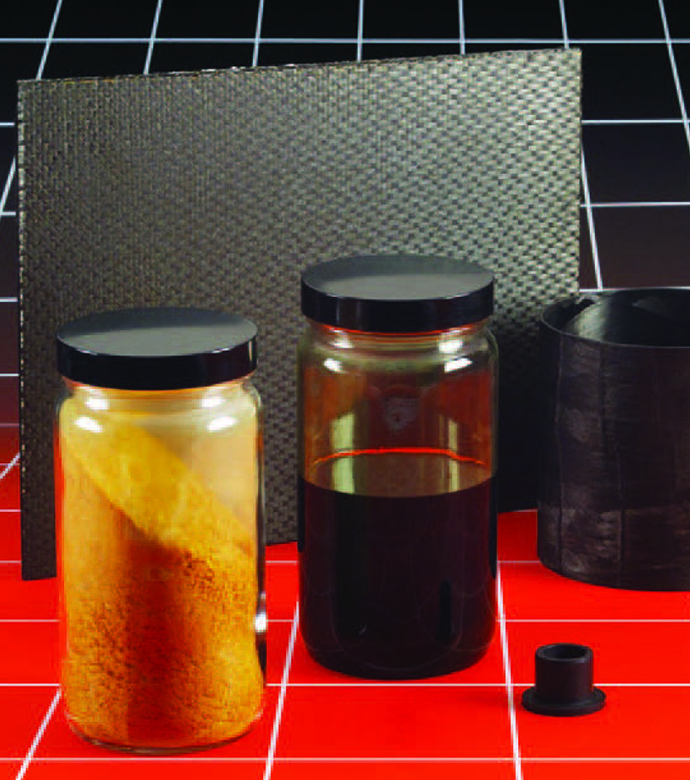Resin Transfer Molding (RTM) 370 Resin for High-Temperature Applications
materials and coatings
Resin Transfer Molding (RTM) 370 Resin for High-Temperature Applications (LEW-TOPS-115)
A solvent-free, low-melt process for creating a high-performance resin with zero emissions
Overview
Innovators at NASA's Glenn Research Center have developed a Resin Transfer Molding (RTM) imide resin known as RTM370 that is generated using a revolutionary, solvent-free process. Its many desirable properties earned it a prestigious R&D 100 Award in 2017. RTM370 has a high glass transition temperature (Tg = 370°C), low-melt viscosity (20 to 30 poise), and long shelf life (up to 2 hours). It can perform at temperatures exceeding 300°C. It melts at 260 to 280°C and can be cured at 340 to 370°C without releasing any harmful or volatile compounds. It is suitable for composite fabrication by injection molding, RTM, resin film infusion (RFI), or vacuum-assisted resin transfer molding (VARTM). Furthermore, carbon fiber filled RTM370 is adaptable to additive manufacturing and can be printed into composite parts by laser sintering - a major breakthrough in high-temperature composite fabrication. These cutting-edge carbon fiber composites can replace any metallic part, providing high-quality, lightweight materials to a variety of industries at low-cost.
The Technology
RTM370 imide resin was developed to address the limitations of conventional imide resins, which are generated from commercially available symmetrical biphenyl dianhydride and oxydianiline (ODA). These resins form symmetrical dianhydride or diamine compounds that result in a substance with much higher viscosity than is viable for RTM, RFI, and VARTM. RTM370 harnesses the unique properties of asymmetric biphenyl dianhydride (a-BPDA) used in combination with a kinked ODA and a 4-(Phenylethynyl) phthalic anhydride endcap to form a mixture that can be melted without the use of solvents, and achieve the desired low-melt viscosity. RTM370 displays a high softening temperature (Tg = 370°C) and can be melted at 260-280°C. It can then be injected into fiber preforms under pressure (200 psi) or through a vacuum (VARTM) to form composites with excellent toughness. The resin can also be made into powder prepregs by melting the resin powders so that they fuse onto fibers. Recently, carbon fiber filled RTM370 imide resins have been fabricated into composites by laser sintering. This exciting advancement in additive manufacturing represents a new frontier for high-temperature composites.
Not only are RTM370 composites lightweight, durable, and impact-resistant, they also possess outstanding abrasion resistance and significant thermo-oxidative stability (as demonstrated in long-term isothermal aging at 288°C for 1,000 hours). In summary, this groundbreaking approach yields a vastly superior resin for fabricating high-quality composites with improved performance, durability, and adaptability. RTM370's unique, solvent-free melt process is simpler, more environmentally friendly, and more cost-effective than competing systems, lending it broad appeal for a variety of Earth-based applications.


Benefits
- High-temperature capability: Retains mechanical properties at extremely high temperatures (up to 315°C)
- Long pot-life: Maintains suitable viscosity for RTM and RFI (20 to 30 poise) for 1 to 2 hours
- Lightweight: Components made from RTM370 are 30 percent lighter than metallic parts
- Clean and green: This solvent-free production process does not produce any harmful, volatile compounds
- Excellent impact-resistance and char yield: RTM370 composites demonstrate high impact resistance and outstanding abrasion resistance at ambient and high temperatures
Applications
- Mechanical systems
- Oil and gas
- Construction
- Electronics
- Aerospace
- Automotive
- Marine
- Commercial space
Similar Results

Blocking/Deblocking Resin Systems
This technology enables the fabrication of co-cured structures without the need for an autoclave or oven large enough to contain the full-scale structure. Instead, sub-components can be prepared in a less expensive, smaller autoclave or oven with co-cure plys applied to the faying surfaces. A continuous, assembled structure can be prepared using a subsequent curing process in a heated press. The co-cured structures can be designed to meet FAA certification criteria for composite structures because no adhesive bond or mechanical fasteners are needed. The structure can be treated as a single, joint-free component.

AERoBOND+ for Manufacturing Composite Structures
The AERoBOND and AERoBOND+ technologies are composite resin materials design innovations that enable new methods for composites joining and manufacturing. The resins are formulated with carefully selected off-set stoichiometries to delay/control the cure such that initial curing of individual components can be followed separately by joining/curing of components together. The ability to delay and control the co-cure joining step provides ease of manufacturing of multi-part composite structures, without compromising joint integrity. There are significant cost savings associated with eliminating fasteners and joint surface preparation steps. To date, the focus of the NASA development effort has been on novel epoxy-based prepreg formulations though other types of thermosets could be considered as well.
The AERoBOND+ innovation provides an added adhesive layer to the AERoBOND joint design to improve the ability to join composite surfaces when these surfaces are less tightly matched. Conventional adhesives, e.g., film, paste, etc., are employed. By including an adhesive between the offset stoichiometric prepreg plies, the adhesive can fill the gaps between the bonding surfaces while maintaining reflowable AERoBOND layer interfaces. Since all interfaces are reflowable, they are much more tolerant of surface contamination, thereby mitigating a primary challenge for conventional adhesive bonding.

New Resin Systems for Thermal Protection Materials
This method produces a low density ablator similar to Phenolic Impregnated Carbon Ablator (PICA) using a cyanate ester and phthalonitrile resin system, rather than the heritage phenolic resin. Cyanate ester resin systems can be cured in a carbon matrix and generate high surface area structure within the carbon fibers. This helps to reduce the thermal conductivity of the material which is one of the key requirements of thermal protection system (TPS) materials. The material has densities ranging from 0.2 to .35 grams per cubic centimeter. NASA has successfully processed the cyanate ester and phthalonitrile resins with a morphology similar to that of the phenolic phase in PICA, but with more advanced properties such as high char stability, high char yield, and high thermal stability. This new generation of TPS materials has the same microstructure as heritage PICA, but improved characteristics of PICA such as increased char yield, increased char stability, increased thermal stability and increased glass transition temperature.

Advanced Isothermally Produced Next-Gen Composites
Next generation aircraft are anticipated to be largely made with composite components, requiring significant increases in manufacturing rates of composites to meet the demand for a new fleet of aircraft. The higher rate manufacturing will require multiple advances, including rapid curing and lower processing temperatures. These requirements can be enabled by new processing methods such as isothermal rapidly cured composite parts.
NASA has developed materials and methods that meet those stringent requirements for high-rate manufacturing. The innovators have demonstrated at least two families of new resin formulations that meet the expected high-rate manufacturing needs. These new formulations have been engineered to be infused and cured at the same (i.e., isothermal) temperature, below that of commercially available materials. The materials can then be removed from the mold while still hot without distorting the shape, thereby reducing the processing times by eliminating the need for cooling to occur in the mold. After a post-cure process - which takes 4 hours or less and can be performed in batches - the mechanical properties of NASA's next-gen composites.
The related patent is now available to license. Please note that NASA does not manufacturer products itself for commercial sale.

Self-Healing Low-Melt Polyimides
There are multiple space-related systems that can benefit from high performance, thin film, self-healing/sealing systems. Space vehicles and related ground support equipment can contain miles of wire, much of which is buried inside structures making it very difficult to access for inspection and repair. Space-based inflatable structures, solar panels, and astronauts performing extra-vehicular activities are subject to being struck by micrometeoroids and orbital debris. Self-healing or sealing layers on inflatables, solar panels and spacesuits would increase the safety and survivability of astronauts as well as the survivability and functionality of inflatables and solar panels. Self-healing insulation on wiring would greatly improve the reliability and safety of systems containing such wiring and reduce inspection and repair time over the lifetime of those systems. This technology combines the use of a self-sealing low melt, high performance polyimide film that exhibits the ability, when cut, for separated edges to slowly flow back together and seal itself, with the options of a laminate system and the inclusion of healant microcapsules that, when broken, release healant which can then additionally assist in the healing process. Combinations of the healing approaches can be enabling to the healing process proceeding at a much greater rate and dual mode healing approach can also allow for healing of a larger area.



